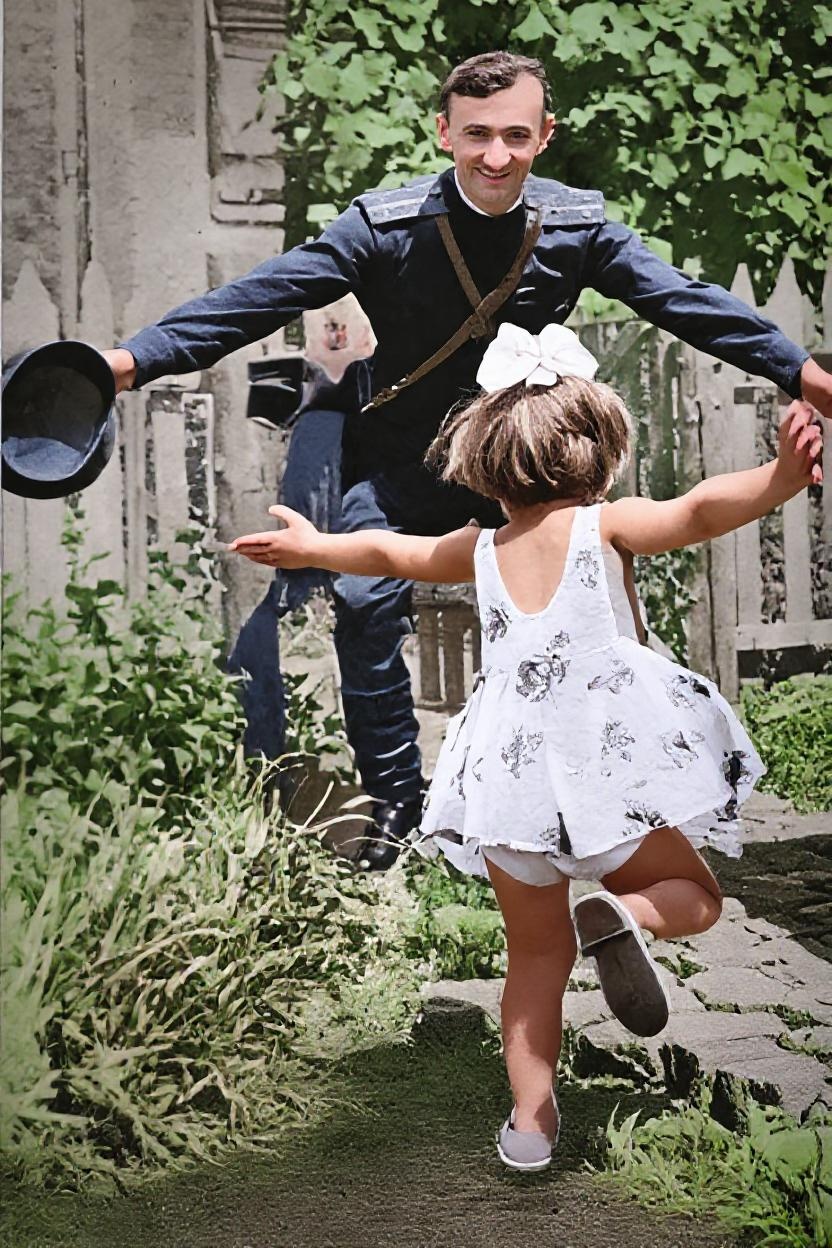The Best AI Image Enhancer Tools in 2025
The Best AI Image Enhancer Tools in 2025
I've spent the last six months testing every AI image enhancement tool I could get my hands on.
Not because I'm a tech reviewer or anything like that – I just had a massive collection of old family photos that needed work, and I wanted to find the best tool for the job.
After processing over 500 photos through dozens of different AI tools, I've learned which ones actually deliver and which ones are just marketing hype.
Here's what I discovered.
Why I Started This Search
It began when my mom asked me to help digitize my grandfather's World War II photos for a family reunion slideshow. We had about 200 photos, and honestly, most were in rough shape – faded, stained, some with torn corners.
I tried the first AI tool I found online. The results were... okay. But I had a feeling there might be better options, so I kept testing. What started as a simple family project turned into an obsession with finding the perfect AI enhancement tool.
My Testing Approach
I didn't just run a few sample photos through each tool and call it done. Instead, I created a standardized test set:
- 10 different photo types: portraits, landscapes, group photos, black and white, color faded, water damaged, etc.
- Consistent evaluation criteria: enhancement quality, naturalness, processing speed, ease of use, and cost
- Real-world scenarios: I used photos I actually cared about, not just test images
This approach revealed some surprising differences between tools that looked similar on the surface.
The Clear Winners
For Overall Quality: Professional-Grade AI Tools
After extensive testing, I found that some tools consistently delivered better results across all photo types. They handled complex damage patterns, maintained natural-looking results, and rarely introduced artifacts.
The standout performers understood context. When processing a photo like this military scene, they could distinguish between the people, uniforms, and background, applying appropriate enhancements to each:

Before: Professional assessment needed

After: Context-aware AI restoration
For Ease of Use: One-Click Solutions
Some tools prioritize simplicity over control. Upload your photo, click enhance, and get results in seconds. While they may not offer the same level of customization, they're perfect for people who just want good results without complexity.
For Specific Problems: Specialized Tools
I discovered that some AI tools excel at particular types of enhancement:
- Portrait specialists that understand skin tones and facial features
- Damage repair experts for severely damaged photos
- Color restoration tools that excel at bringing life back to faded images
- Upscaling specialists for enlarging small images
Categories That Matter
General-Purpose Enhancement
These tools handle a bit of everything – color correction, sharpening, damage repair, and overall improvement. They're the Swiss Army knives of AI photo enhancement.
Best for: People with mixed collections of photos needing various types of improvement.
My experience: These tools gave consistently decent results across all photo types, though specialized tools sometimes performed better for specific problems.
Damage Repair Specialists
These focus specifically on fixing physical damage – tears, stains, missing sections, and severe degradation.
Best for: Old photos with significant physical damage.
My experience: When I had severely damaged photos, these specialized tools often succeeded where general-purpose tools struggled.
Color Restoration
Tools designed specifically for correcting fading, discoloration, and converting black-and-white photos to color.
Best for: Photos with color fading or black-and-white images you want to colorize.
My experience: The quality difference was dramatic. Specialized color tools produced much more natural-looking results than general enhancement tools.
Upscaling and Resolution
These tools focus on making small images larger without losing quality – useful for old photos that were scanned at low resolution or taken with early digital cameras.
Best for: Photos you want to print larger than their original size.
My experience: The best upscaling tools could double or triple image size while actually improving clarity.
What I Learned About Pricing
Free Tools
Several tools offer free tiers or trials. The quality varies wildly:
- Some free tools produce results as good as paid options
- Others are clearly designed to get you to upgrade
- Processing limits are common (number of photos per day/month)
Subscription vs. Pay-Per-Use
I tested both models extensively:
Subscriptions make sense if you're processing lots of photos regularly. The per-photo cost drops significantly.
Pay-per-use is better for occasional enhancement projects. You're not paying for capacity you don't use.
Hidden Costs
Watch out for:
- Watermarks on free versions
- Size limits (many tools downsize your images unless you pay)
- Export restrictions
- Processing time limits
Real-World Performance Differences
Processing Speed
This varied dramatically. Some tools processed photos in seconds, others took minutes. For batch processing hundreds of photos, speed matters.
Quality Consistency
Some tools produced excellent results on certain types of photos but poor results on others. The best tools maintained consistent quality across different image types.
Artifact Generation
Lower-quality tools often introduced artifacts – weird textures, unnatural sharpening, or color distortions. The best tools avoided these issues.
Features That Actually Matter
Batch Processing
If you have lots of photos to enhance, batch processing is essential. Some tools let you upload dozens of photos and process them automatically overnight.
Before/After Comparison
The ability to easily compare original and enhanced versions is crucial for quality control.
Adjustment Controls
While AI automation is great, sometimes you want to fine-tune results. The best tools offer sliders to adjust enhancement intensity.
Output Quality Options
Being able to choose output resolution and format affects both file size and print quality.
Surprising Discoveries
Older Tools Sometimes Win
Some of the newer, heavily marketed AI tools actually performed worse than older, more established solutions. Marketing hype doesn't always match reality.
Specialized Often Beats General
For specific problems, specialized tools almost always outperformed general-purpose solutions, even if the general tools were more expensive.
Mobile Apps Can Be Excellent
Some mobile AI enhancement apps produced results that rivaled desktop software. The convenience factor is huge.
Training Data Matters
Tools trained on more diverse datasets handled unusual photos better. This became obvious when processing photos from different eras and cultures.
Common Pitfalls to Avoid
Over-Processing
It's tempting to max out enhancement settings, but this often makes photos look artificial. Subtle improvements usually look more natural.
Wrong Tool for the Job
Using a general enhancement tool for specific problems (like severe damage) often produces inferior results compared to specialized tools.
Ignoring Output Quality
Some tools compress your enhanced images, negating the improvement. Always check that you're getting full-quality output.
Not Testing Before Committing
Many tools offer free trials or samples. Use them. What works well for one person's photos might not work for yours.
My Current Workflow
After all this testing, here's what I actually use:
- Quick assessment: I look at each photo and categorize the type of enhancement needed
- Tool selection: I use different tools for different problems rather than trying to make one tool do everything
- Batch processing: For similar photos with similar problems, I process them in batches
- Quality check: I always review results before considering a photo "done"
Looking Ahead: 2025 Trends
The AI image enhancement space is evolving rapidly:
- Better mobile integration: Phone apps are getting as powerful as desktop tools
- Real-time processing: Some tools now enhance images as you upload them
- Better training data: Newer models trained on more diverse datasets
- Specialized niches: Tools designed for specific photo types or problems
Bottom Line Recommendations
If you want the best quality: Invest in professional-grade AI tools and be prepared to learn their features.
If you want simplicity: Choose one-click enhancement tools that prioritize ease of use over control.
If you have specific problems: Use specialized tools rather than trying to make general tools do everything.
If you're budget-conscious: Start with free trials to find what works for your specific photos before paying.
The democratization of AI image enhancement means that professional-quality photo restoration is now accessible to everyone. You don't need expensive software or technical skills to dramatically improve your photos.
The key is matching the right tool to your specific needs and having realistic expectations about what AI can and can't do.
👉 Ready to find your perfect AI enhancement tool? Start exploring here with our comprehensive solution.